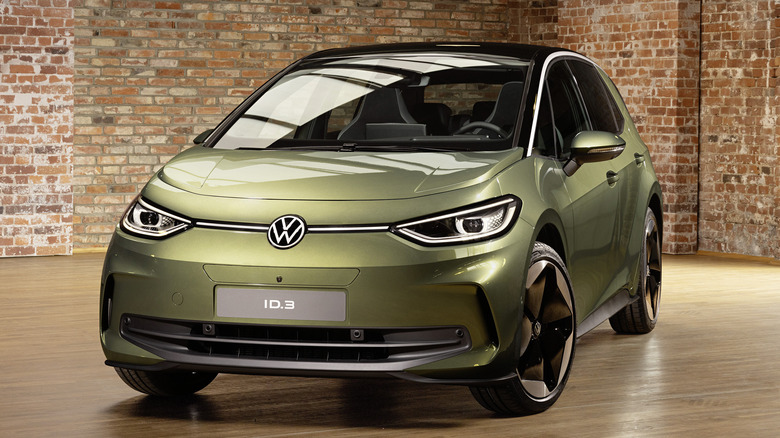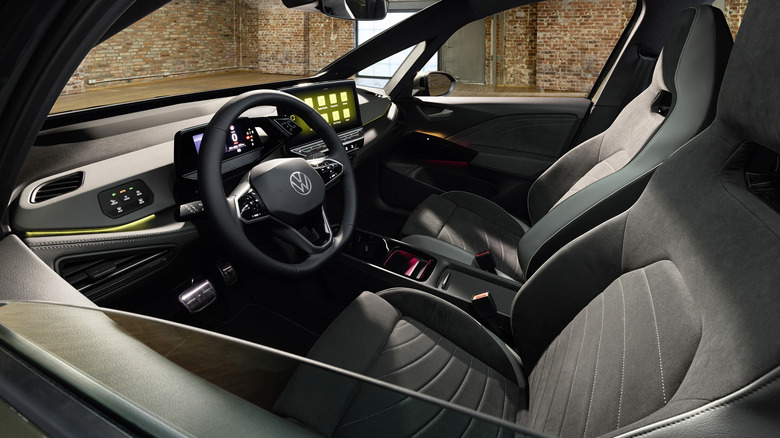Volkswagen's ID.3 Update Is Going To Upset American Drivers Even More
Launched back in 2019, the Volkswagen ID.3 was the first product release from the brand's ID family of battery-electric vehicles. Approximately the size of a VW Golf, The ID.3 seems like the kind of car that enthusiasts would clamor for — a capable, sensible hatchback. Except that it's not sold on American soil.
Scott Keogh, CEO of Volkswagen Group of America, explained why in an interview: "To me, it's just simple, simple logic. If you look at the segment that the ID.3 competes in, let's call it the classic hatchback segment. In America, unfortunately, that's about 100,000 cars. If you look at what we're going to do with the E-SUV, that's four to five million cars."
But for European residents who are able to purchase the ID.3, some exciting updates are coming in reaction to well-publicized issues with the hatchback's software and interior quality. Volkswagen is calling the revamped vehicle a second-generation of the ID.3, although it would probably be more accurate to refer to it as a mid-cycle refresh.
Considering that the ID.3 hasn't been on the market very long, this refresh does beg the question if the product cycles of technology-packed EVs are going to mirror that of electronics like smartphones. That would mean more frequent updates compared to internal combustion engine vehicles, which typically have a five-to-seven year gap between all-new models.
VW has genuinely listened to feedback
Addressing consumers' largest concern, the ID.3 will feature the latest generation of Volkswagen's ID software. Not only have the menus and layout been modified to reduce complexity, but the system is now capable of receiving over-the-air updates. The cherry on top is that information is displayed on a larger 12-inch central touchscreen, replacing the previous 10-inch screen.
On the inside, VW has implemented a material called Artvelours Eco, with contrasting stitching for the door panels and seat covers. Although it looks like luxe Alcantara suede, the Artevelours Eco fabric is both animal-free and environmentally friendly, containing 71% recycled plastic. In general, a conscious effort has been made to eliminate hard plastics from the cabin in favor of more upscale soft surfaces.
The ID.3's exterior has been given a refresh, too. Previously criticized for styling that was a little too safe or even boring, the EV hatchback now sports a more angular front bumper with aggressive vertical air ducts which are said to improve air flow around the front wheels.
A new elongated hood eliminates a previous black filler panel below the windshield to give the ID.3 a more integrated appearance and slightly improved aerodynamics. Changes to the rear of the vehicle aren't as drastic, but we do find a set of handsomely redesigned taillights.
Volkswagen hasn't provided pricing or country-by-country availability for the second-gen ID.3 yet, but like the car that it's replacing, we wouldn't count on it reaching U.S. shores. If it's any consolation, North America has been promised a version of VW's rad neo-Microbus, called the ID.Buzz, instead.

